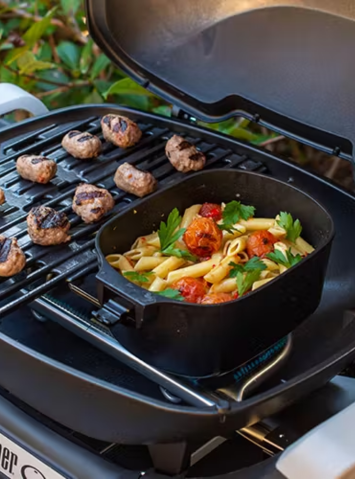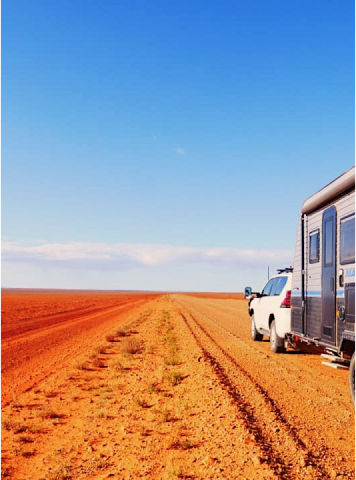A Beginner's Guide to 4WD
31st Aug 2022
It seems that more people are going off-road than ever before. So if you’re one of those who are taking up 4WD driving for the first time, here are some Everything Caravan & Camping tips to help get you started and keep you safe.
Get Familiar with Your 4WD
Start easy – beach driving and dirt roads will help you get used to your 4WD before you put it through its paces over more difficult terrains like mud, rocks, and snow.
Know What Your 4WD Can & Can’t Do
- Look under it to check the ground clearance and wading depth – make sure you know your 4WD’s lowest point to avoid scraping its underbody when cresting a hill.
- Also check your approach and departure angles so you know what types of obstacles you can traverse without damaging the front and rear of your vehicle, especially while driving up or down a steep incline.
Complete 4WD & Off-Road Courses
If you’ve not driven a 4WD before, and want to get adventurous, it may be worthwhile enrolling in a 4WD course before you go exploring off-road. This will help prepare you with the basic skills and techniques you’ll need, while being in a controlled and safe environment. An internet search will help you locate organisations near you that offer these courses and we recommend you choose one that is accredited and nationally recognised.
Check Your 4WD Tyre Pressure
Knowing when and where to lower your 4WD tyre pressure when off-road driving is something you need to keep top of mind. Your 4WD recommended PSI for bitumen roads is usually shown on your vehicle’s handbook, on a sticker on the inside of the driver’s door, and on the sidewall of your tyres. You’ll need to remember to drop the air pressure for off-road driving, adjusting it to suit the terrain you’ll be driving through.

But How Do You Know What Your Tyre Pressure Should Be Off-road?
Different surfaces require different levels of pressure and there is no “correct” tyre pressure as the load of your RV, the tyre type, and the condition of road come into play. It’s a bit of trial and error - you’ll know you’ve got the right pressure when you feel how your vehicle responds as you steer, accelerate and brake.
Plan Your 4WD Trip
Take time to plan your trip – note where you intend to stop and for how long, and stick your chosen route into your navigation system so that you don’t get lost. Better yet, don’t go it alone as an extra set of eyes and hands is very helpful especially when you’re new at off-road driving.

Don’t forget to check the weather to make necessary preparations or adjustments to work with any changes ahead.
It’s worth checking your insurance policy cover too, to make sure you know what is or isn’t covered if something goes wrong when off-road driving; check carefully to see what exclusions apply.
Plan for Emergencies
As awesome as off-road driving may be, there are times when you may become stuck, so always take a Recovery Kit with you. It doesn’t have to be extensive but it should include:
- Shovel
- Tyre Repair Kit
- Tyre Pressure Gauge
- 12V Air Compressor
- Some Rated Shackles
- Snatch Strap
- Basic Hand Tool Kit
- First Aid Kit
- Recovery Tracks
- Starter Kit
- Hand Winch
- Water

If you’re going to a remote area, it’s worth taking a PLB (Personal Locator Beacon) or Satellite phone with you. And remember to tell someone where you’re going and when you expect to return so that they’ll have an idea of where you’re heading and when you’ll be back.
Dealing with the Dirt
Driving on dirt roads can kick up clouds of dust in and around your vehicle. This can reduce visibility and affect the quality of air in your 4WD so remember to close your windows and set your air vents on ‘fresh’ to pressurise the cabin and stop dust from being sucked in.
Getting Bogged will Happen, Be Prepared for It
If you're taking your 4WD off-road, then you like to take on a challenge. Getting bogged is an inevitability of a 4WD trip. Just make sure you have packed the right products to get yourself out os a sticky situation nice and quickly so you don't keep everyone held up. Here are the essentials:
Slowly Does It
Keep a constant watch out for deep ruts or holes in the road, fallen branches and rocks, and either try to avoid them or reduce your speed as you traverse them so there’s minimal damage to your vehicle.
Gradually decrease your speed when approaching corners rather than braking hard at the last moment. Taking things slow better equips you for any surprises which may come around the curve.
Understand your ABS and its braking capabilities – remember it’s designed to maximise steering control when braking, not make the car stop sooner!
Going slow is good for your tyres, better for your suspension, and best for the nerves of all those travelling with you! After all you don’t want this trip to be the best last one!
Watch Out for Water
Be prepared for water crossings – what you think may just be a puddle could be a metre deep. Get out and walk through the water to check for yourself just how deep it is. Wading through river crossings first also lets you see how fast the water may be flowing.
Once you know it’s safe to enter, approach the water slowly and maintain the same constant low speed while traversing it.
If the water exceeds your 4WD wading depth, an aftermarket snorkel will help. This snorkel fits onto your engine’s air intake so that it can continue to ‘breathe’ while making deep river crossings.
Most of All, Have Fun!
Now that you know the basic rules, get out there and hit those tracks. Happy driving and stay safe!



















